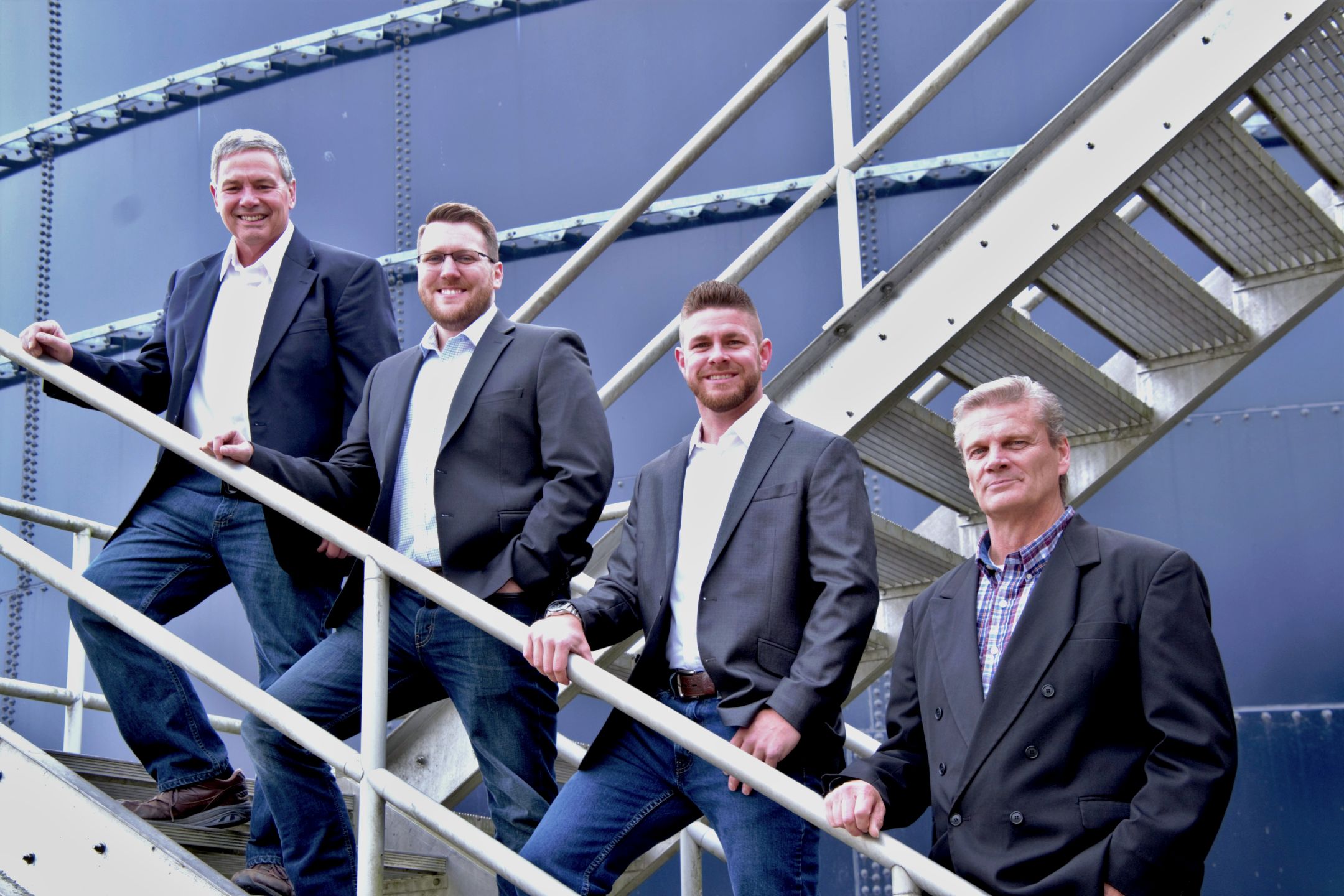When considering the implementation of a wastewater treatment system, understanding the associated costs is crucial for planning and decision-making. At EarthTek, we specialize in providing innovative wastewater treatment solutions that not only meet regulatory compliance but also optimize operational efficiency and cost-effectiveness. This guide explores the various costs involved in wastewater treatment systems, particularly focusing on the technologies we offer: Sequencing Batch Reactors (SBR) and Moving Bed Biofilm Reactors (MBBR).
Types of Wastewater Treatment Systems
Sequencing Batch Reactors (SBR)
A Sequencing Batch Reactor is an advanced wastewater treatment system that combines various treatment processes into a single reactor, thereby optimizing space and reducing costs. Unlike continuous flow systems, the SBR operates in sequential cycles, which allows it to efficiently handle variations in wastewater flow and composition.
The typical SBR cycle consists of five stages: Fill, React, Settle, Decant, and Idle. In the Fill stage, the reactor is fed with wastewater. During the React stage, the reactor conditions are controlled—through aeration and mixing—to encourage the biological degradation of pollutants. This stage is crucial for the breakdown of organic matter by microbes.
After the biological treatment, the Settle stage allows the solid particles to separate from the treated water by gravity. The clear water then moves to the Decant stage, where it is carefully extracted from the top of the reactor without disturbing the settled sludge. The final stage, Idle, prepares the reactor for the next cycle.
This type of SBR is well-suited for applications where space is limited, and high treatment efficiency is required. It is particularly advantageous in handling varying loads, making it ideal for municipal and industrial wastewater treatment facilities. The SBR not only ensures robust treatment but also offers flexibility in operation and ease of automation, leading to significant operational cost savings and environmental compliance.
Moving Bed Biofilm Reactors (MBBR)
The Moving Bed Biofilm Reactor (MBBR) is a highly efficient attached-growth treatment process that utilizes bioreactors filled with plastic media, which has a slightly lower specific gravity than water. Unlike traditional activated sludge systems, the MBBR technology utilizes thousands of polyethylene biofilm carriers operating in mixed motion within an aerated wastewater treatment basin.
Each carrier is carefully designed with a high surface area to support the growth of biofilm, which comprises the microorganisms necessary for the degradation of pollutants. As wastewater passes through the reactor, these biofilms consume organic matter, thereby treating the water. The carriers are kept in motion by course bubble diffusers positioned at the bottom of each reactor to ensure adequate concentration of oxygen for optimum treatment efficiency.
One of the standout features of the MBBR system is its robustness and adaptability to various wastewater qualities and volumes, making it ideal for municipal and industrial applications. It can be easily retrofitted into existing treatment facilities to increase their capacity or improve effluent quality without the need for additional tanks. This makes MBBR technology particularly appealing for upgrading facilities facing stricter regulatory demands or increased wastewater loads.
Furthermore, MBBR systems require less maintenance than traditional treatment systems. The biofilm carriers prevent biomass washout, which stabilizes the biological treatment process even under high hydraulic and organic loads. This stability is crucial for industries with fluctuating wastewater characteristics.
MBBR technology offers an effective solution for wastewater treatment through its compact design, scalability, and resilience to variable load conditions. Its ease of integration into existing facilities, coupled with operational simplicity, makes it an increasingly popular choice for efficient wastewater management.
Detailed Cost Factors
Understanding the financial investment required for wastewater treatment involves several components:
- Capital Expenditure: This includes the costs of engineering, purchasing, and installing the equipment. Capital expenditures can vary significantly depending on the technology chosen and the scale of the treatment facility.
- Operational Expenditure: Operational costs include ongoing expenses such as energy consumption, chemical usage, sludge disposal, and routine maintenance. Operational expenditure will also vary significantly depending on the technology chosen and the scale of the treatment facility.
Comparative Cost Analysis: SBR vs. MBBR
Wastewater treatment systems are crucial for protecting water resources and ensuring public health. However, the costs associated with constructing and operating these systems can vary widely depending on several key factors.
Initial Capital Costs:
Comparing the initial capital costs of Sequencing Batch Reactor (SBR) and Moving Bed Biofilm Reactor (MBBR) systems, especially when using buried fiberglass tanks, involves considering several factors that impact the overall expense. Each system has distinct design and operational requirements that can influence their initial investment costs. Here’s a breakdown of the key factors:
SBR Systems:
Complexity and Control Systems: SBR systems operate in batches, requiring sophisticated control systems to manage the fill, react, settle, and decant phases. These control systems, along with the need for precise timing mechanisms, add to the initial costs.
Tank Design and Volume: Since SBRs treat batches sequentially, they may require larger or multiple tanks to process the same amount of wastewater as continuous systems like MBBR. The need for larger or additional tanks increases the initial capital outlay.
Flexibility in Treatment: SBR systems can be highly effective in variable load conditions, which might reduce the need for extensive pretreatment systems, potentially lowering some of the upfront infrastructure costs.
MBBR Systems:
Biofilm Carriers: MBBR systems require biofilm carriers for bacterial attachment. The cost of these carriers depends on the tank volume and the specific carrier design needed for the wastewater characteristics.
Aeration and Mixing Equipment: MBBR systems rely heavily on aeration and agitation to ensure the biofilm carriers are effectively mixed and supplied with sufficient oxygen. This equipment, including blowers and mixers, represents a substantial portion of the initial capital cost.
Simplicity of Design: Generally, MBBR systems are simpler in design compared to SBRs because they operate continuously without the need for the sophisticated controls required to manage multiple batch phases. This can result in lower costs associated with instrumentation and control systems.
Cost Comparison:
Tank Costs: For both systems, using buried fiberglass tanks would likely represent a similar cost component, as the material and burial requirements do not significantly differ between the two technologies.
Equipment Costs: SBR systems typically have higher initial costs as they often require more complex control systems and possibly larger tank volumes, which can balance out or exceed the costs of MBBR systems depending on the scale and specific design parameters.
Installation Costs: Installation costs for both systems are influenced by the site-specific conditions and the complexity of integrating additional equipment. MBBR systems could be simpler to install due to their continuous process nature, potentially lowering these costs slightly compared to the batch processing needs of SBR systems.
In summary, while both systems use similar tank materials, the overall initial capital costs can differ based on the required equipment, control systems, and tank capacities. SBR might be more expensive in terms of control systems and potential tank size, whereas MBBR could lead in costs related to aeration systems. The best choice depends on the specific treatment requirements, regulatory compliance needs, and budget constraints of the project.
Operational Costs:
Operational costs of wastewater treatment plants using Sequencing Batch Reactor (SBR) and Moving Bed Biofilm Reactor (MBBR) systems can vary significantly due to differences in their design and operational mechanics. Here’s a comparison of the operational cost factors for each system:
SBR Systems:
Energy Consumption: SBR systems typically have high energy demands due to aeration requirements during the react phase and the operation of pumps and controls to manage the sequential batch processes. The energy costs can be significant, depending on the complexity of the project.
Labor and Maintenance: The batch nature of SBRs requires careful monitoring and control, potentially increasing labor costs. Additionally, the mechanical components and monitoring equipment may require maintenance.
Sludge Production and Handling: SBRs can produce a variable amount of sludge depending on the treatment cycle and biological activity. The management of this sludge adds to the operational costs.
MBBR Systems:
Energy Consumption: MBBR systems also require energy, primarily for aeration and mixing to keep the biofilm carriers in motion. However, the energy use is generally more consistent compared to the varied demand across the different phases of an SBR cycle.
Labor and Maintenance: MBBRs typically have lower labor requirements due to their continuous and less complex operational nature. The simplicity of the system design reduces the need for frequent maintenance.
Sludge Production and Handling: MBBR systems produce less sludge compared to many other biological treatment processes because the biofilm grows attached to carriers rather than as suspended biomass. This reduces the frequency and costs associated with sludge handling.
Cost Comparison:
Energy Costs: The MBBR’s energy cost is typically higher than an SBR as they have large blowers and need higher oxygen since the blowers run continuously.
Maintenance Costs: MBBR systems tend to have lower maintenance and labor costs because of their simpler, continuous operation and fewer moving parts.
Sludge Handling Costs: The reduced sludge production in MBBR systems can lead to lower costs for sludge processing and disposal.
Overall, while both SBR and MBBR systems have their advantages, MBBR systems often have reduced sludge production and lower labor and maintenance requirements. This makes MBBR a cost-effective option, particularly in applications where consistent treatment performance and low operational complexity are valued.
Long-Term Costs:
When comparing the long-term costs of Sequencing Batch Reactor (SBR) and Moving Bed Biofilm Reactor (MBBR) wastewater treatment systems, several factors contribute to their overall financial impact over the life of the plant. Here’s a look at the primary long-term cost considerations for each system:
SBR Systems:
Equipment Replacement and Upgrades: Due to the mechanical complexity and the cyclical operation of SBR systems, there is typically a higher frequency of wear and tear on mechanical components like pumps and monitoring equipment. These components may require more frequent replacement or upgrading, contributing to higher long-term costs.
Energy Consumption: SBRs often experience variable energy usage that can peak during fill and react phases, and slump during settling and decant phases. This cyclic variability can reduce energy costs by operating equipment when needed.
Operational Flexibility and Scalability: While SBR systems offer excellent flexibility in terms of load variation and nutrient removal capabilities, scaling up or modifying the system to meet increased capacity or stricter regulations can be costly due to the need to adjust or add batch cycles and potentially increase tank capacity.
MBBR Systems:
Carrier Media Replacement: While the biofilm carriers in MBBR systems generally have a long lifespan, they do require eventual replacement due to wear and tear or loss during maintenance activities. The cost of replacing these carriers is a consideration, though it is typically less frequent than mechanical replacements in SBR systems.
Steady Energy Use: MBBRs have more consistent energy use due to continuous operation, which can result in more predictable and often higher energy costs over the long term compared to the cyclic energy usage patterns of SBR systems.
System Stability and Maintenance: The MBBR system is known for its robustness and low maintenance requirements. The stability of the biofilm process often results in fewer disruptions and lower costs related to troubleshooting, repairs, and labor over the lifespan of the plant.
Overall Long-Term Cost Implications:
Maintenance and Replacement Costs: MBBR systems tend to have lower maintenance requirements and fewer mechanical components that need frequent replacement, potentially resulting in lower long-term costs compared to SBR systems.
Energy Costs: The energy demands of an SBR system can offer cost savings over time, especially in energy-sensitive operations.
System Expansion and Upgrades: Expanding or upgrading an MBBR system can be simpler and potentially less expensive than modifying an SBR system, as it typically involves adding more carriers or additional reactors without the need for complex reprogramming or reconfiguration of batch processes.
Overall, MBBR systems may present lower long-term costs due to their stability and lower maintenance needs. However, the specific circumstances of a wastewater treatment facility, such as treatment requirements, local energy costs, and regulatory environment, can significantly influence these cost dynamics. For many facilities, the decision between SBR and MBBR will depend not only on initial and operational costs but also on how these long-term factors align with the facility’s regulatory requirements and budget constraints.
Choosing the Right System for Your Needs
Selecting the right wastewater treatment system depends on several factors, including regulatory requirements, the physical constraints of your site, and your budget. Discover our hassle-free Budget Calculator to estimate the cost for your package wastewater treatment plant. Whether you’re planning a new installation or upgrading an existing system, this tool offers a quick and accurate way to explore wastewater treatment plant costs tailored to your project. EarthTek provides consultations to help you understand the best options for your specific needs, ensuring you invest in a system that offers the best return on investment.
Conclusion
Investing in a wastewater treatment system is a significant decision that affects both operational efficiency and long-term costs. With EarthTek, you gain a partner committed to providing you with a system that not only meets today’s environmental standards, but does so in the most cost-effective manner possible. Contact us to discuss how we can help you achieve compliance and operational excellence.









